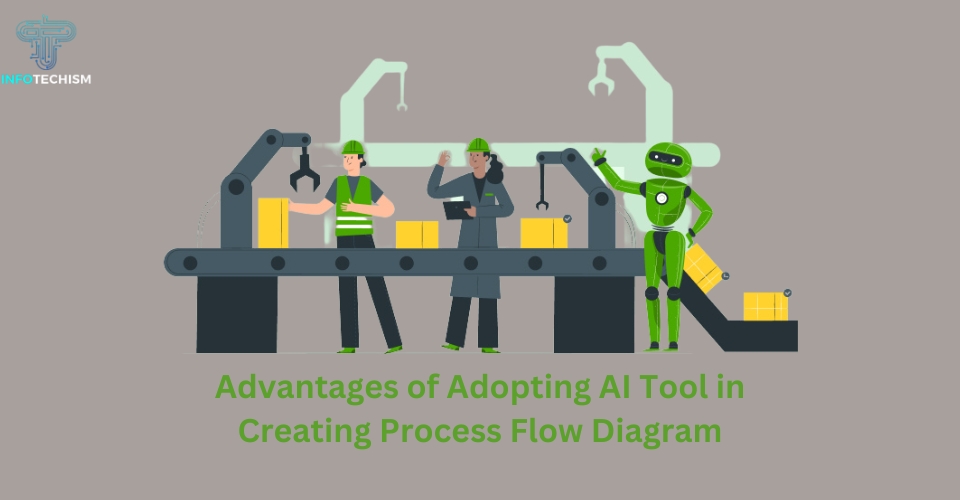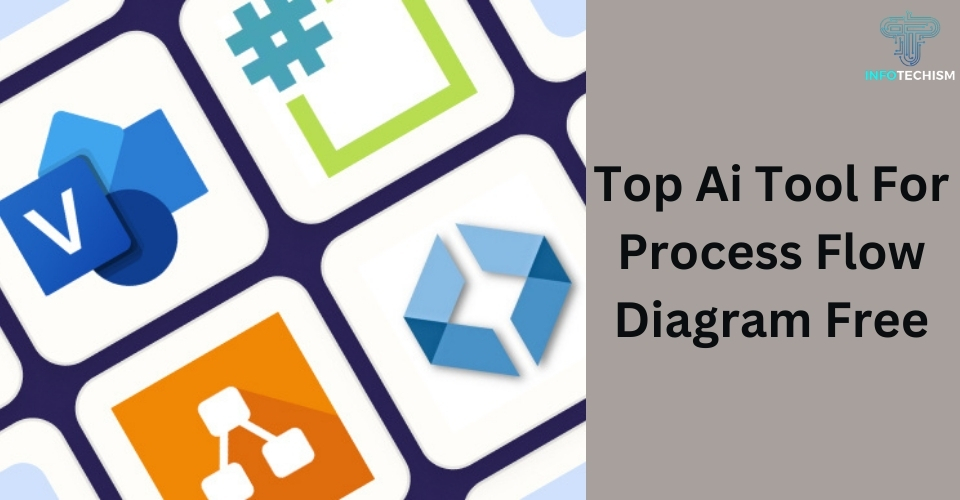Since PFDs are sketch maps used to illustrate the typical process in the plant, efficiency of the representation is maintained. They assist in enhancing operational knowledge and analysis of the process to discover areas for enhancement within processes. Infotech’s drawing of these pfd’s may be quite elaborate and may take appreciable amount of time especially when done manually. This is where AI tools that auto-generate basic PFDs can come in handy quite a lot as they would ease the process.
Advantages of Adopting AI Tool in Creating Process Flow Diagram

Saves Time and Effort
Still, the most dramatic advantage of using an AI tool for PFDs is that the program automatically performs the layout and diagramming tasks. In my case once you tell it what to do the tool prepares a neat looking description of the process which is real easy on the eyes. It is much faster than doing PFDs for documents and saves engineers as well as designers a great deal of time.
When completed, it will establish properly standardized diagrams.
One of the most significant benefits of using AI PFD software is that the product will generate uniform layouts of PFDs that align with the established norms. Symbols, shapes sizes, and connection lines all align to guidelines and there is no mistake each is placed. Traditional documentation methods that depend on human beings to draw diagrams cannot maintain this level of consistency and standardization.
Improves Quality
Manual creation of PFD can lead to small errors since there are many times the labeling of equipment, the flows showing the processes and mapping of plant areas are involved. AI software does not produce such quality related problems because it provides diagrams based on the input process information fed. This all aids to improve the accuracy for the teams to evaluate the processes, and make the needed decisions.
Enables Iteration and Changes
An idea that is important to know is that PFDs can be revised more than once as processes get adjusted. With AI tools, the work of modernizing gets as easy as simply editing the process descriptions. New PFDs are generated fast, thus freeing the engineers from the annoying task of diagram redrawing especially when pressed on time.
What to Consider in Free tools

Manufacturers currently use paid PFD software with rich functions, but free AI tools also have a great application prospect. When evaluating free diagramming tools, some key capabilities to look for include:
- Its friendly and easy to use, has easy drag and drop interfaces
- Standard symbol libraries
- Connector lines that change as symbols are moved
- Diagram template- Active multiple templates
- It’s also about being able to export them in standard platforms such as PDF and PNG.
- For your information fixed investment is also incorporated which encompasses process equipment such as tanks, valves, pumps etc.
- Commands to point down inputs and outputs and to define sequences
- Develop both an end-to-end architecture and detailed picture.
- Ability to add own annotations
Leading Free AI Tools
Infotech’s some leading free AI tools to generate process flow diagrams are:
- Nodeshot – Internet site and application with free access to a limitless number of diagrams
- SmartDraw – Only $59.95 per year – allows you to create two PFDs for free with large symbol libraries.
- Zen Flowchart – A simple drag and drop which can export to pdf
- Canva – is a general use platform for design that comes with process diagram templates.
- Lucidchart – A known product with the possibility of utilizing it with no payments, if one needs a simple diagram.
- Draw.io – A feature-rich tool that includes free of charge offer with possibility of team work.
These tools enable the teams to do a significant part of the PFD creation job with no cost at all. As vulnerabilities often connect to premium plans, the free versions can fulfill lots of needs for simple diagrams.
Factors To Bear In Mind When Using Free PFD Software
When using free PFD AI tools, some considerations include:
- Limited Features and Libraries: A free account compared to a paid account has limited features compared to the paid version. Oddly, most are still used to fulfill general requirements.
- Data Security: One should therefore asses permissions, access control and data policies especially when implementing any cloud based tool.
- Collaboration Ability: Check whether, free users can share diagrams and let some members edit at the same time.
- Technical Support: Verify options such as live chat, email or community forum to solve problems for customers.
- Ease of Use: The simplest of tools that are out there on the market does not need any form of training. Concentration on those ones which have graphical user interface where the process of interaction involves only dragging and dropping objects.
- Diagram Flexibility: If you are expecting to perhaps not need complex diagrams in the future, even when employing free software, it may be a good idea to look to the future.
- Branding and Ownership: There is always a possibility that accounts which are free may lack the ability to delete tool branding from the exported diagrams or claim total ownership of diagrams made.
In this way, using these points when evaluating free PFD software, engineering teams can pick the right option to speed up their design and optimisation processes.
Infotech’s process flow diagram automatically created by the tools with the help of AI has many folds better performance than the manual method. Even for free solutions, the engineering capabilities mature very fast and, therefore, teams of any scale will potentially benefit greatly from integrating such automation software into their plant design applications. While applying the structured process knowledge already available in organizations to layout abilities of AI, high quality PFDs can be created at this scale like never before. This acceleration in diagram creation of time relieves the skilled engineering resource having constrained time for other higher value acts of process enhancement.







